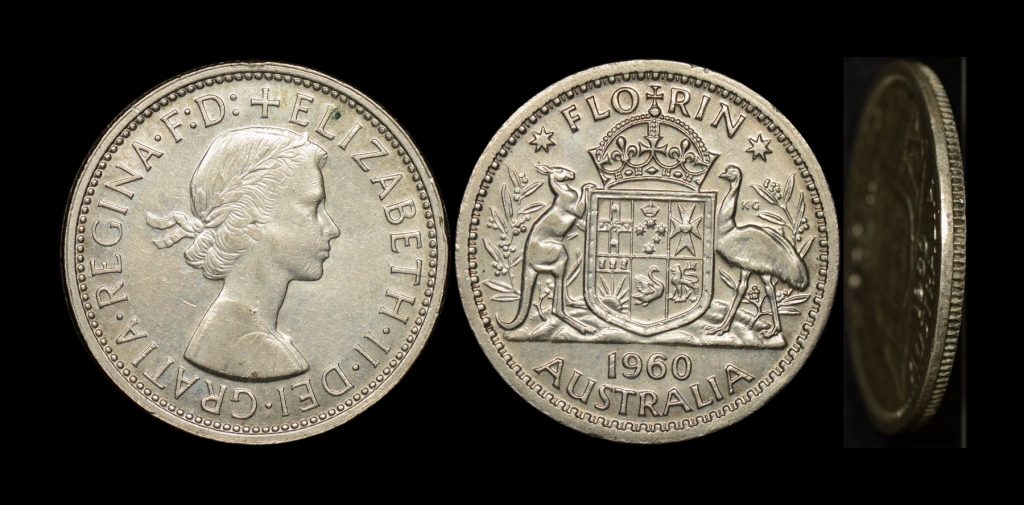As originally published in Australasian Coin and Banknote Magazine September 2020
What Went Wrong -error coins that escaped the mint
At a passing glance this ‘quaternary alloy’ 1960 florin looks like most of the other 15.76 million minted with that date. This is one of those errors where close examination of the much neglected third side of the coin is required. When this is done it can be seen that this is a special coin indeed.
Australian florins have a reeded or milled edge, a feature originally designed in the middle ages to stop the coin being clipped. However, in more modern times it’s done to stop counterfeiting and to make coins more easily identifiable by touch. The coin edge is struck by the third die (the collar die) and on an Australian florin the edge reeding should extend from the obverse face of the coin to the reverse face. However, it’s obvious from the deformed edge of this coin that an error occurred when it was struck. The planchet only partially engaged with the collar die and thus the edge reeding hasn’t been applied correctly. Consequently, this error type is known as a ‘partial collar error’.
Examination of this particular example shows that the edge milling has been applied to about half the thickness of the coin and the other half is smooth. The milling is present adjacent to the obverse face and not present adjacent to the reverse face. Obviously, the smooth edge is where the coin blank failed to engage with the collar die, indicating that in this case the obverse die was the ‘anvil die’ and the reverse die was the ‘hammer die’. This error can be further classified as a ‘straight partial collar error’ as the transition between the struck / unstruck parts of the rim are parallel to the coin faces. When this transition is not parallel the error is typically known as a ‘tilted partial collar error’.
Mark Nemtsas and Kathryn Harris own and run The Purple Penny coin shop in Adelaide and are passionate about error coins.


